
Though they're both beef roasts, pot roast and sirloin tip roast have distinct characteristics. The first you'll likely notice at the checkout counter: Pot roasts are typically about one and a half times cheaper than sirloin roasts, and usually you can taste the difference. This isn't to say pot roasts aren't flavorful, but turning them into the juicy, robust meals they can be takes some time. For sirloin tip roasts, it's sear and swelter; for pot roasts, slow and low.
Cut
One main difference between pot roast and sirloin tip roast is the section of the cow they come from. Pot roasts are cut from the chuck and brisket sections of the carcass, also known as the shoulder and lower chest areas. The majority of the cow's body weight is supported by both of these areas. Sirloin tip roasts come from an area that doesn't need such muscle, called the bottom sirloin, which is at the rear of the back.
Cooking Pot Roast
Because pot roast is a leaner, tougher meat than sirloin, it should be braised at a low temperature -- no more than 300 degrees Fahrenheit -- over a long period of time. A Dutch oven or slow cooker are good options for braising. With both you can easily add broth, vegetables that go well with beef, such as carrots and potatoes, and whatever seasonings you enjoy. One hour of low temperature braising per pound of pot roast is a good rule to go by.
Cooking Sirloin Tip Roast
Sirloin tip roast is cooked using dry heat. After being seasoned with salt, pepper and whatever other spices you like, it's typically doused with cooking oil, usually olive oil, then seared in a hot pan until it has a light brown crust. It will then be transferred to a preheated oven. Some cooks then roast the beef at a single low temperature of about 250 F until the internal temperature is 140 F for medium-rare or 155 F for medium. Others will roast the sirloin tip at a high temperature of about 500 F for 30 to 60 minutes and then shut off the oven or reduce the oven temperature to about 275 F until done.
Flavor
The different cuts and cooking techniques definitely influence the flavor of these two roasts. Braising infuses moisture from the outside, whereas dry roasting locks in the juices already in the meat. This means that sirloin tip roasts retain the mild and slightly fatty flavor inside while adding a browned, salty exterior. Pot roast will have a slight beef flavor, but it's more influenced by the taste of the liquid, vegetables and seasoning used.
Related Articles

How to Cook Pulled Beef Without a Slow ...

Different Cuts of Steak

How to Use an Electric Roaster to Slow ...

How to Braise a Cross Rib Steak

Choice Vs. Prime Beef Grades

How to Cook a Large Amount of Corned ...

How to Convection Roast a Brisket
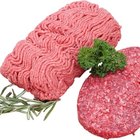
What Cuts of Meat Are Used for Ground ...

How to Make a Blackbuck Antelope Roast

How to Cook Silverside on a Stove Top

Can Chuck Roast Be Used for Stew?

Which Cuts of Meat Come From the Front ...
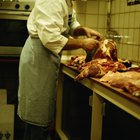
Cuts of Meat From a Front Quarter of ...
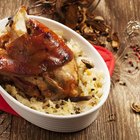
How to Cook Knuckle Roast
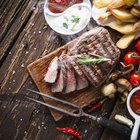
How to Cook Dominican-Style Steak
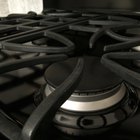
How to Cook Corned Beef Without Being ...
How to Cook Brisket Slowly With a ...

Filet vs. Strip vs. Sirloin
How to Slow Cook a Pot Roast With Beef ...

How to Cook With Pork Jowl
References
Resources
Writer Bio
Based in Halifax, Nova Scotia, Jordan Whitehouse has been writing on food and drink, small business, and community development since 2004. His work has appeared in a wide range of online and print publications across Canada, including Atlantic Business Magazine, The Grid and Halifax Magazine. Whitehouse studied English literature and psychology at Queen's University, and book and magazine publishing at Centennial College.
Photo Credits
Jupiterimages/Photos.com/Getty Images